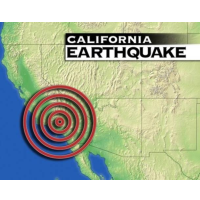Earthquake Warning System Conceived in California Helps Japan…but not California

When the 9.0 Fukushima earthquake rocked Japan in 2011, crippling nuclear facilities and generating a deadly tsunami, an early warning system conceived at the California Institute of Technology (Caltech) 10 years ago and installed in 2007 helped prevent even more destruction.
The 60 seconds of advanced warning allowed time to stop 11 bullet trains, disable 16,000 elevators, flash warning signs to motorists and give students a chance to duck under desks, although it didn’t prevent the 16,000 quake-related deaths and 6,000 injuries.
So where is California’s early-warning system? The answer is: partially deployed but mostly on the drawing board waiting for about $80 million and the will to put it in place statewide. California State Senator Alex Padilla introduced legislation in January that would require the Office of Emergency Services, “in collaboration with various entities, including the United States Geological Survey, to develop a comprehensive statewide earthquake early warning system in California.”
As Padilla’s bill points out in its introduction, existing law merely “requires the office to develop and distribute an educational pamphlet for use by kindergarten, any of grades 1 to 12, inclusive, and community college personnel to identify and mitigate the risks posed by nonstructural earthquake hazards.”
That probably won’t get the job done, and maybe neither will Padilla’s proposal, which is moving through the California legislature with, as yet, no appropriation of funds attached to it. Padilla told the New York Times, “I haven’t come across anybody who thinks we shouldn’t do it. The only question I get is ‘Where is the money going to come from?’”
Six months ago, the answer to Padilla’s rhetorical question might have been a shrug of the shoulders from government officials who have been wrestling with enormous state deficits since the 2008 worldwide economic meltdown. But a recent upturn in the economy and a roaring stock market has put California back in the black with a multi-billion-dollar surplus.
The Kobe earthquake in 1995 was a major impetus for Japan’s development of its alert system, and a 1985 Mexico City earthquake pushed Mexico to develop one there. The 1994 Northridge quake was California’s last major shaker, but that disaster didn’t seem to be enough to get the job done in the Golden State.
Around 300 sensors are already in place in the state, but hundreds more are necessary to complete a network that would also require new software and an expansion of sensor stations for starters.
The Japanese system was developed by Richard Allen of the University of California, Berkeley and seismologist Hiroo Kanamori of Caltech. Building on a vision espoused in 1868 (yes, the 19th century) by a physician, Dr. J.D. Cooper, their research focused on the measurement of what are called p-waves, early benign rumblings from crunching tectonic plates that can act as precursors to the devastating s-waves that ripple through the ground with destructive force.
Their work, published in 2003, was used in Japan when it put 1,000 seismometers in place along the Pacific Ring of Fire. Those sensors provided the data which triggered the alert that popped up on computer desktops and cellphones, set off loudspeaker systems on rooftops and screeched through mass transit systems.
In California, the only screeching to be heard if there is a major earthquake will likely come from residents who want to know why they didn’t have some advanced warning.
-Ken Broder
To Learn More:
The California-Made Earthquake Alarm That Works But California Won’t Build (by Robert Schoon, Gizmodo)
Sounding the Alarm (by Azeen Ghorayshi, East Bay Express)
Progress Stalls in California on Earthquake Warnings (by Adam Nagourney, New York Times)
California Prototype Quake Warning System Gave 35 Seconds Notice before 4.7 Temblor This Week (Associated Press)
Earthquake Early Warning System Passes Major Test with Quake (by Joseph Serna, Los Angeles Times)
Real-Time Seismology and Earthquake Damage Mitigation (by Hiroo Kanamori, California Institute of Technology) (pdf)
- Top Stories
- Unusual News
- Where is the Money Going?
- Controversies
- U.S. and the World
- Appointments and Resignations
- Latest News
- Trump to Stop Deportations If…
- Trump Denounces World Series
- What If China Invaded the United States?
- Donald Trump Has a Mental Health Problem and It Has a Name
- Trump Goes on Renaming Frenzy






Comments